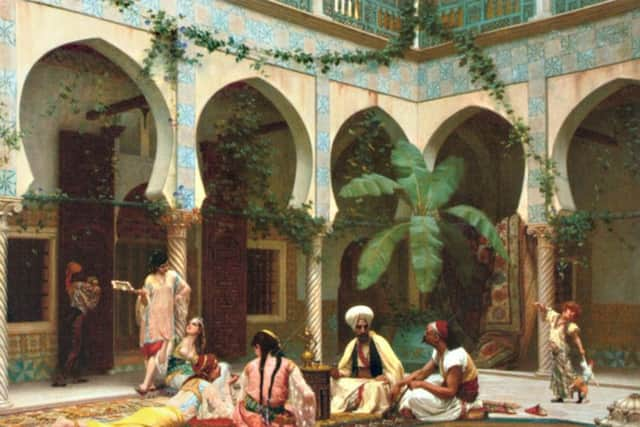On this day 1750: Scottish farm girl who became Empress of Morocco is born
The story of Helen Gloag, the daughter of a farmer from Perthshire, is as fascinating as it is perhaps fantastical.
Many stories have been told about Gloag, who was born on January 29 1750, who walked out the door of the family farm at Muthill near Crieff aged 19 after becoming increasingly at war with her step mother.
Her own mum died when she was just a little girl.
Advertisement
Hide AdAdvertisement
Hide Ad

Some have doubted the fabulous story which followed Gloag's departure with the tale of her apparent odyssey becoming well embedded in local storytelling tradition.
But, among the doubters, there are also accounts of those who remember Gloag, described as a 'good looking woman' who liked playing cards.
Her mother's nephew, Duncan McGregor, was a Jacobite hero of the '45 rebellion who often boasted of the Empress in the family.
Determined to emigrate to the Americas, Gloag reportedly set sail from Greenock - some say London - in May 1769 but the ship was intercepted in the Atlantic by Barbary pirates from Salle in Morocco around two weeks into the journey, according to accounts.
Along with fellow passengers and crew, Gloag was seemingly sold at a slave market in Algiers and then presented to the harem of Sultan Sidi Muhammed XVIII.
After the Emperor, a moderate who did much to open up trade with Europe, fell for her natural beauty, she became his fourth wife and was given the title Empress after bearing him two sons.
Her departure from Scotland coincided with a campaign of piracy waged by North African pirates during the 17th and 18th Century.
According to accounts, the corsairs moved up and down the British coastline, usually hovering around the Bristol Channel, waiting to intercept passing vessels.
Advertisement
Hide AdAdvertisement
Hide AdRaids as far north as Scotland were not uncommon with an earlier BBC Timewatch investigation claiming that 1.25 million white Europeans were captured by North African pirates and slave traders during this period.
Gloag, it has been suggested, was one of them.
After embedding in the Moroccan court, Gloag’s brother, Robert, a seaman, then began trading with Morocco, bringing gifts back to Scotland for her family and neighbours including farmer John Bayne who is referenced as a former lover of Gloag in some accounts.
Gloag, who some credit with aiding the sultan’s campaign to reduce piracy out of Morocco, was involved in the succession crisis after the death of her husband around 1790.
Gloag and her two sons were deposed and given sanctuary in a monastery, according to accounts.
The date and place of Gloag’s death remains unknown with the Perthshire country girl vanishing from records altogether.
The Biographical Dictionary of Scottish Women states there is no documentary evidence that Gloag made it to Morocco at all.
It said: “Sidi Muhammed did have white wives and concubines, but Dr Lempriere, who visited Sidi’s harem in 1789, saw no sign of a Scottish sultana.
“Perhaps Helen Gloag invented her own Perthshire legend to cover up some less savoury career in the Mediterranean, yielding the fine china - not a Moroccan product - which she apparently sent home.”
Advertisement
Hide AdAdvertisement
Hide AdJim Hewitson, in his book The Skull and Saltire, Stories of Scottish Piracy Ancient and Modern, said: “One fascinating sideline noted by present-day visitors to Sallee, the twin city of Rabat, is that there are numerous red haired, freckle-faced residents of the port. The tradition is that far-travelled Arab traders or slavers intermarried with the tribes of Ireland and some timein the early Middle Ages but perhaps Helen’s evidence is also evident.”
The Perthshire Advertiser set out its stall on the legend of Helen Gloag in 1839.
It reported: “We have reason to believe that this romantic story is, in its essential features, strictly true.”